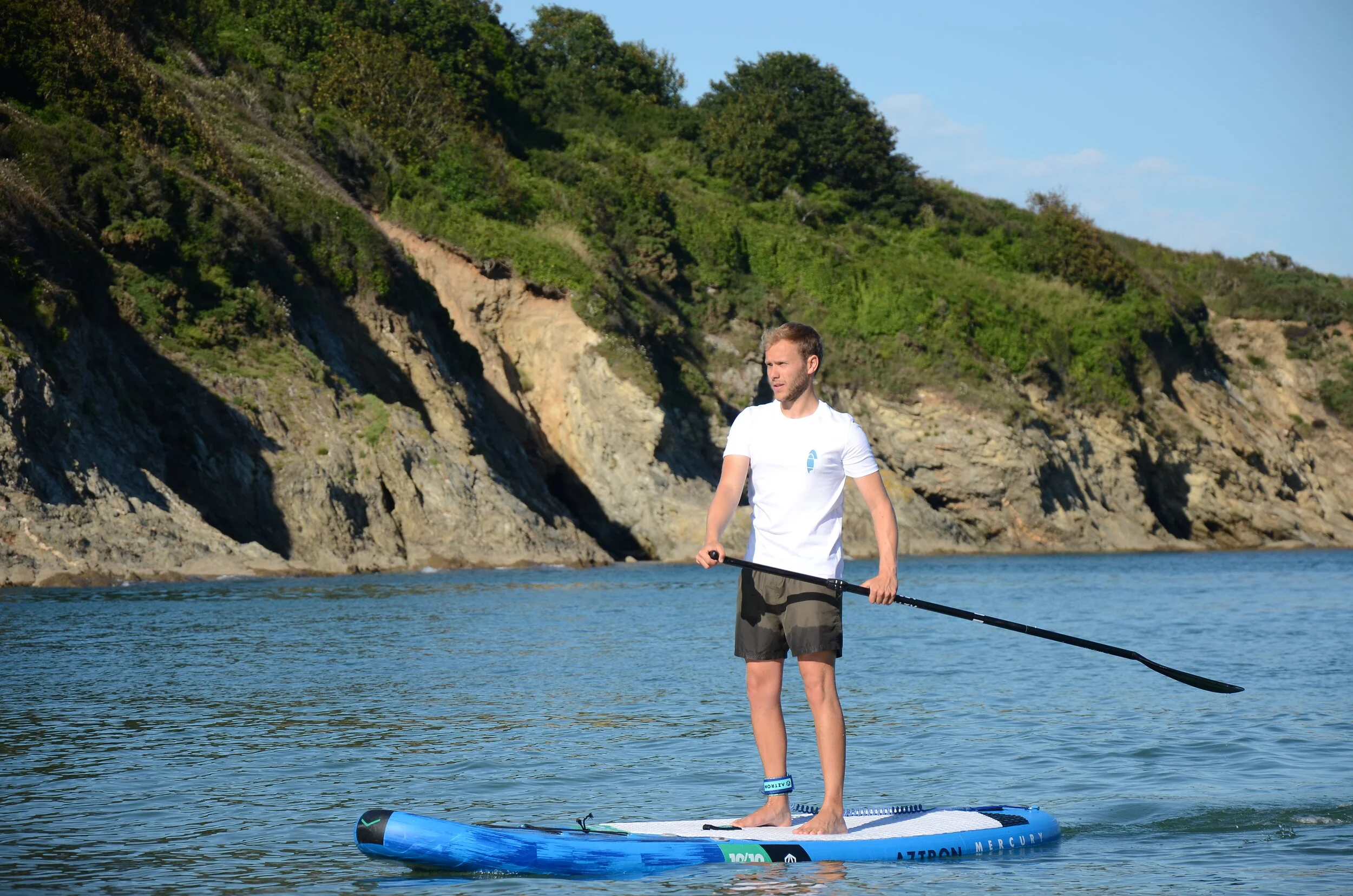Do’s and Don’ts for Watching Marine Life
For me, the most exciting part of every paddle is the wildlife I encounter along the way. Over the years I’ve had some amazing wildlife encounters whilst out paddling, from stingrays in New Zealand’s Marlborough Sounds, to grey seals, barrel jellyfish, and giant blue fin tuna right here in the UK.
But, as paddlers we have a duty and a responsibility to respect nature and share our playground responsibly with those that own it, wildlife. For eight years I lived in Falmouth in south east Cornwall and it would pain me to see folk on kayaks or SUPs getting too close to hauled-out grey seals or rocking up on a beach below a peregrine falcon nest site. I have no doubt they were innocent in their actions and completely unaware that in doing so they had flushed a female peregrine from her nest, or that the seal who ‘jumped’ into the sea to get a closer look at them, had actually panicked and fled, likely injuring itself in the process, to get into an environment where it feels more secure, the water.
So, here’s the question, as paddlers how do we do better at preventing wildlife disturbance whilst still enjoying our time out on the water?
Well there are a few simple measures you can take whilst out on the water if you’re lucky enough to encounter a marine mammal or basking shark whilst paddling:
Keep a distance of 100 metres.
Do not chase or attempt to feed the animal.
Travel at a steady, slow speed.
Ensure that the animal is not trapped between you and another vessel, make sure they have an escape route.
Only watch the animal for short periods of time, no more than 15-20 minutes.
Move away if you notice signs of disturbance, this could be repeated avoidance behavior, sudden changes in speeds and direction, or prolonged periods underwater.
Whilst paddling close to shore you may even come across a pinniped haul-out. By pinniped, I’m referring to seals, sea lions and walrus. Members from this awesome family of marine mammals can be found all over the world, hauling themselves out of the water to rest, reproduce, molt and digest their food. It is during this time when they’re hauled out that pinnipeds are most prone to disturbance, so it’s essential that you give these sites a wide berth and avoid landing or entering the sea adjacent to such locations. The same goes for coastal nesting birds such as peregrine falcons.
Now all this being said, marine mammals can be rather curious and may even approach you for a closer look. So you may be thinking, ‘now what do I do?’ Well first of all, how cool is that? This animal has approached you to see what’s going on, or to check out what brand of board you’re using, but it’s important you don’t take advantage of their curiosity. Stay calm, keep moving at a predictable and steady pace and let the animal decide how close they want to be. Leave the animal as you found it.
If you are fortunate enough to spot a seal, dolphin or porpoise whilst out paddling, why not drop a pin on your Paddle Logger app? The sighting location could be useful for local wildlife charities and research organisations.
For further reading, check out these links:
The Scottish Marine Wildlife Watching Code
ZSL’s Marine Mammal Code of Conduct Infographic
Sea Watch Foundation Marine Code of Conduct





